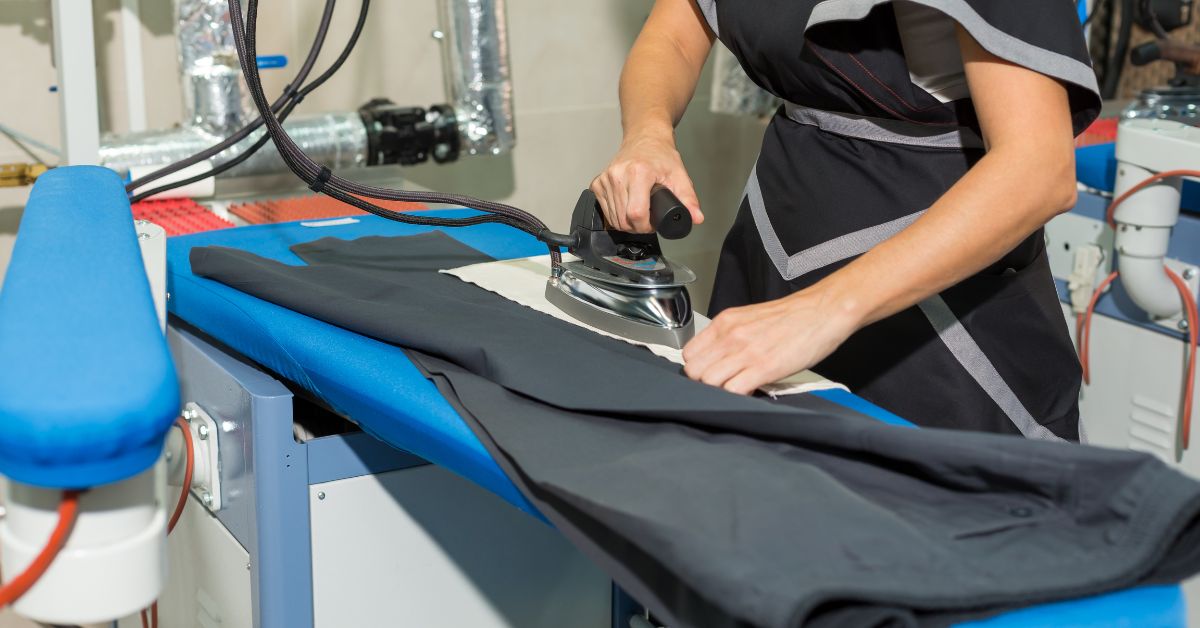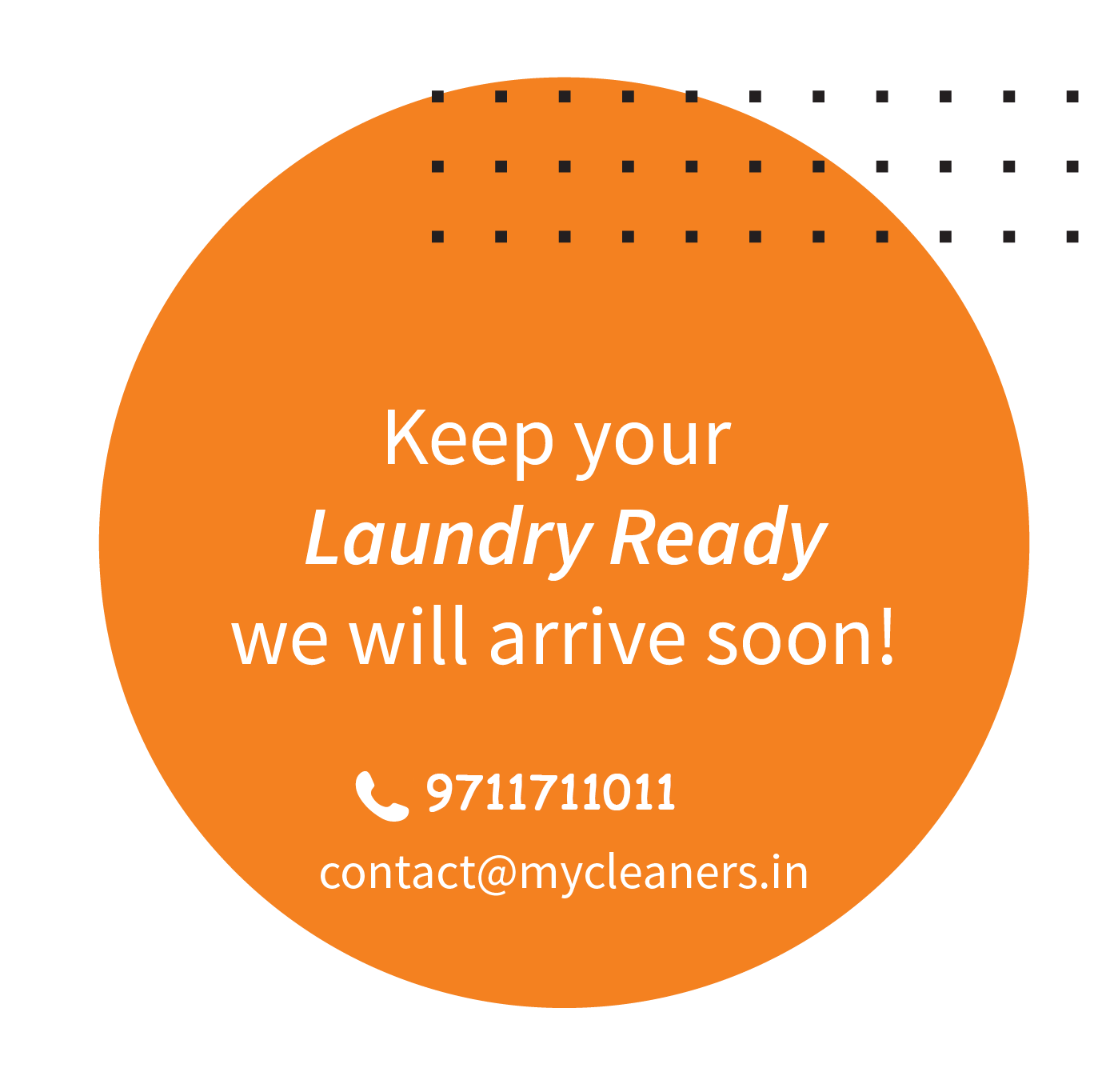
23-June-2025 06:09:55
Steam Iron vs Dry Iron: Which One Should You Choose
Life is busy. We've all got our share of day-to-day obligations, not to mention evening engagements. So when you've finally managed to pick the right outfit, you don't want it looking rumpled, right?
Enter the iron. They make it easy to get clothes looking good in minutes. Should you choose a steam iron or a dry iron?
Both promise wrinkle-free clothes, but they work differently. And they're better for different types of fabrics. As the fabric landscape and our lifestyle choices change, choosing the right iron has never been more critical.
Many people still iron at home, but others are choosing the convenience of professional service. Whether it's delicate silks, formal cotton, or school uniforms, Mycleaners takes the guesswork out of ironing.
"Steam and dry irons each have their advantages, but when it comes to pressed clothes with zero effort on your part, nothing beats professional service."
Let's break down the differences between the two irons so you can make the best choice for your wardrobe and your lifestyle in 2025.
What is a Steam Iron?
A steam iron is an electric device that generates steam from water, which is emitted through the holes in the soleplate. It softens the fabric fibres, and the steam helps to break the fibres more easily than dry heat alone. Modern steam irons come with water tanks, a spray mist function, and adjustable steam output.
Steam irons are especially useful on heavy fabrics like cotton, denim, linen, and wool. They are great for removing wrinkles in fabrics that would be hard for a dry iron to iron out.
Key Features:
-
Water spray nozzle
-
Steam burst and vertical steam.
-
Anti-drip and anti-scale systems
-
Adjustable temperature and steam settings
Pros:
-
Great for removing tough wrinkles
-
Suitable for larger or heavier fabrics
-
It can be used vertically for curtains or hanging clothes.
Cons:
-
Heavier due to the water tank.
-
It needs regular cleaning to prevent scale buildup.
-
It costs a bit more than a dry iron.
For heavy-duty ironing at home, the steam iron is often the better choice.
What is a Dry Iron?
A dry iron uses heat to press clothes. It heats up and applies heat to the fabric through a smooth, flat soleplate. It doesn't use water or steam. Instead, the fabric reacts to the heat to remove wrinkles. It's simpler than a steam iron and is generally lighter and easier to manoeuvre.
Dry irons are best for delicate fabrics like silk, polyester, satin, and synthetics, which can be damaged by too much moisture or steam. For example, the water can cause stains, shrinkage, or marks.
Key Features:
-
Basic thermostat control
-
Compact and lightweight
-
Smooth soleplate with even heat distribution
-
There is no water tank, so there is little maintenance.
Pros:
-
Simple to use and low maintenance
-
Lightweight and portable
-
Good for delicate fabrics
Cons:
-
Less effective on thick, deep-set wrinkles
-
Fewer features
-
No steam means more effort for stubborn creases.
For those who only need a quick touch-up or only wear delicate clothes, the dry iron remains a trusted classic.
What’s the Difference Between Steam and Dry Iron?
To make it easier, here’s a comparison of the two types of irons:
|
Feature |
Steam Iron |
Dry Iron |
|
Uses Water? |
Yes |
No |
|
Best for Fabric Type |
Heavy fabrics (cotton, denim, linen) |
Delicate fabrics (silk, polyester) |
|
Price |
More expensive |
Usually affordable |
|
Maintenance |
Needs descaling and cleaning |
Low maintenance |
|
Weight |
Heavier (due to water tank) |
Lighter and compact |
|
Wrinkle Removal |
Faster on deep creases |
Better for minor touch-ups |
|
Features |
Multiple steam settings, vertical steam |
Basic heat control |
|
Power Usage |
Slightly higher due to steam generation |
Lower power consumption |
A steam iron is best for wrinkle removal, especially on thick, layered clothes. However, they require more maintenance and are generally heavier to use.
Dry irons are simple and reliable. They’re best for quick touch-ups and fabrics that can’t be handled by moisture.
Which One Should You Choose for Different Fabric Types?
It depends on the fabric you're working with. Here's a guide:
-
Cotton: Steam iron – best for removing deep wrinkles
-
Linen: Steam iron – loosens tight fibres with moisture.
-
Dry iron – low heat, no water to avoid stains
-
Dry iron – best at low temperatures without steam
-
Steam iron – needs steam for softening and shaping.
-
Steam iron – for quick removal of deep creases
-
Dry iron – to avoid watermarking and shine spots
-
Dry iron – safe heat, no steam for delicate
"Not sure how to treat wool suits or chiffon fabrics? Mycleaners uses the exact process for each fabric type—whether it's steam, dry press, or professional finishing."
Knowing the sensitivity of each fabric is essential to avoid damaging them. If you have a mix of fabrics and aren't sure how to handle them or aren't confident about the settings, outsourcing the job is the safer option.
Maintenance and Durability: What to Expect from Each
Steam Irons:
They need more maintenance. Repeated use of tap water builds upscale inside the holes and tank, especially in hard water areas. Most steam irons have anti-scale filters or self-cleaning features, but they need regular attention.
-
Clean regularly to avoid clogging.
-
Use distilled water if possible.
-
Descale monthly (or as recommended)
They have more parts—like steam vents, tanks, and nozzles—so they wear out sooner if not well-maintained.
Dry Irons:
They're easy to maintain. Since there's no water tank or steam feature, there's less that can go wrong.
-
Wipe the soleplate to remove residue.
-
Keep the cord untangled and clean.
-
Store it in a dry area to prevent rust.
With regular care, a dry iron can last 5–10 years or more.
Also Read: - How to do dry cleaning at home
Convenience Factor: Ironing at Home vs Professional Pressing
Ironing at home isn't always a favourite pastime. It takes time, patience, and skill—especially when it comes to clothes like pleated skirts, blazers, or silk blouses.
|
Ironing at Home |
Professional Pressing (Mycleaners) |
|
|
Time |
Time-consuming |
Time-saving |
|
Skill |
Requires skill for complex items |
Expert handling of all fabric types |
|
Risk |
Risk of fabric damage |
Safe, fabric-specific techniques |
|
Setup |
Requires an appliance + storage |
No need for an iron or steamer |
A shirt can take you 5–10 minutes to iron at home. Multiply that by a week’s worth of clothes, and you’re looking at hours. That’s not even counting items like blazers or saris, which require extra care and skill.
“With Mycleaners, you can skip the mess, effort, and worry about fabric damage—just schedule a pickup and we’ll handle the rest.”
Professional services are also great before events, interviews, or the holidays when you want everything crisp, clean, and ready—without picking up an iron.
Cost Comparison: Iron vs Dry Cleaning
Ironing at Home:
-
Steam iron: ?2,000–?4,000 upfront
-
Dry iron: ?500–?1,500
-
Electricity cost: ?150–?300/month (based on usage)
-
Time: Priceless!
Over time, the upfront cost of buying an iron looks cheaper. But the effort and time invested in ironing add up.
Professional Pressing (Mycleaners):
-
Per item pricing: Affordable pricing for pressing-only options
-
Time & effort saved: No maintenance, setup, or learning curve
-
No need to buy or store an iron or board
Mycleaners also offers subscription and package options for families, professionals, and frequent travellers—making the service affordable and convenient.
Time is money. For many customers, outsourcing the job means freed-up bandwidth and a neat look.
When Should You Skip Ironing Altogether?
There are certain cases when ironing at home isn't practical—or even advisable.
-
Saris, sherwanis, and lehengas need special handling and specific pleating.
-
Requires specific pressing that's hard to achieve at home
-
No time to iron daily or even weekly
-
Delicate or luxury fabrics: Risk of scorching or watermarks
"Our express delivery and specialized techniques make it easy to look sharp without picking up an iron."
If you're dressing for a job interview, attending a wedding, or are too pressed for time (pun intended), skipping the iron and using Mycleaners is often the more intelligent choice.
Also Read: - How to remove turmeric stain from clothes
Conclusion
So, should you choose a steam iron or a dry iron?
It depends. If you wear cotton, linens, or heavy fabrics regularly, go for a steam iron. For synthetics, silks, or simple touch-ups, a dry iron is better. Each has its own strengths—and maintenance requirements.
But if you'd rather skip the job entirely, let Mycleaners handle it.
From professional-level pressing to fabric-specific techniques, Mycleaners makes it easy to get fresh, wrinkle-free clothes without you ever picking up an iron.
Ready for wrinkle-free living?
Book your first pickup with Mycleaners today and experience the convenience of professional-level pressing delivered to your door.
